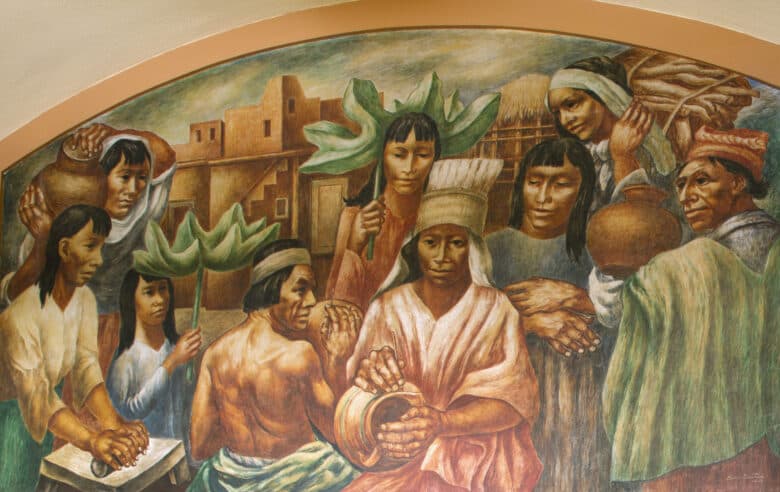Art Analysis: The Art of the New Deal, 1934
Use this primary source imagery to analyze major events in history.
Suggested Sequencing
- Use this primary source to have students analyze art created by the Public Works of Art Project, a part of the New Deal that employed artists to create art for government and public buildings.
Introduction
One of the goals of the New Deal was to put as many unemployed Americans back to work as quickly as possible. Before the well-known Works Progress Administration (WPA) was created in 1935 to create jobs, a smaller, less-ambitious program called the Public Works of Art Project (PWAP) was developed in 1934. PWAP hired thousands of unemployed artists to create paintings, murals, and crafts for government and public buildings. The government suggested these designers depict American life in their works.
Sourcing Questions
- Who created these pieces of art?
- Why did the government hire these artists?

Figure 1 Baseball at Night. (credit: Morris Kantor, Baseball at Night, 1934, oil on linen, Smithsonian American Art Museum, Gift of Mrs. Morris Kantor)

Figure 2 Golden Gate Bridge. (credit: Ray Strong, Golden Gate Bridge, 1934, oil on canvas, Smithsonian American Art Museum, Transfer from the U.S. Department of the Interior, National Park Service)

Figure 3 Subway. (credit: Lily Furedi, Subway, 1934, oil on canvas, Smithsonian American Art Museum, Transfer from the U.S. Department of the Interior, National Park Service)

Figure 4 Racing. (credit: Gerald Sargent Foster, Racing, 1934, oil on canvas, Smithsonian American Art Museum, Transfer from the U.S. Department of the Interior, National Park Service)
Comprehension Questions
- (Figure 1) (Figure 3) List three adjectives to describe the subject matter of each painting.
- (Figure 1) (Figure 2) (Figure 3) (Figure 4) How did each painting depict American life?
- (Figure 1) (Figure 2) (Figure 3) (Figure 4) What symbols (if any) were used in each painting?
Historical Reasoning Questions
- Critics of Roosevelt argued that PWAP was a waste of taxpayer dollars, whereas those in favor of it argued PWAP created jobs and the created art was a form of entertainment for a public that desperately needed a morale boost. With which side do you agree and why?
- (Figure 1) (Figure 2) (Figure 3) (Figure 4) Why do you think the artists depicted optimistic, everyday scenes in these works?
- (Figure 1) (Figure 2) (Figure 3) (Figure 4) Compare these paintings (each completed in 1934) with the photographs of the Dust Bowl Photographs: The Dust Bowl and Rural Poverty, 1936–1937 Primary Source). Taken together, what do these images reveal about American life in the 1930s?
Image 1: https://americanart.si.edu/artwork/baseball-at-night-12930
Image 2: https://americanart.si.edu/artwork/golden-gate-bridge-23442
